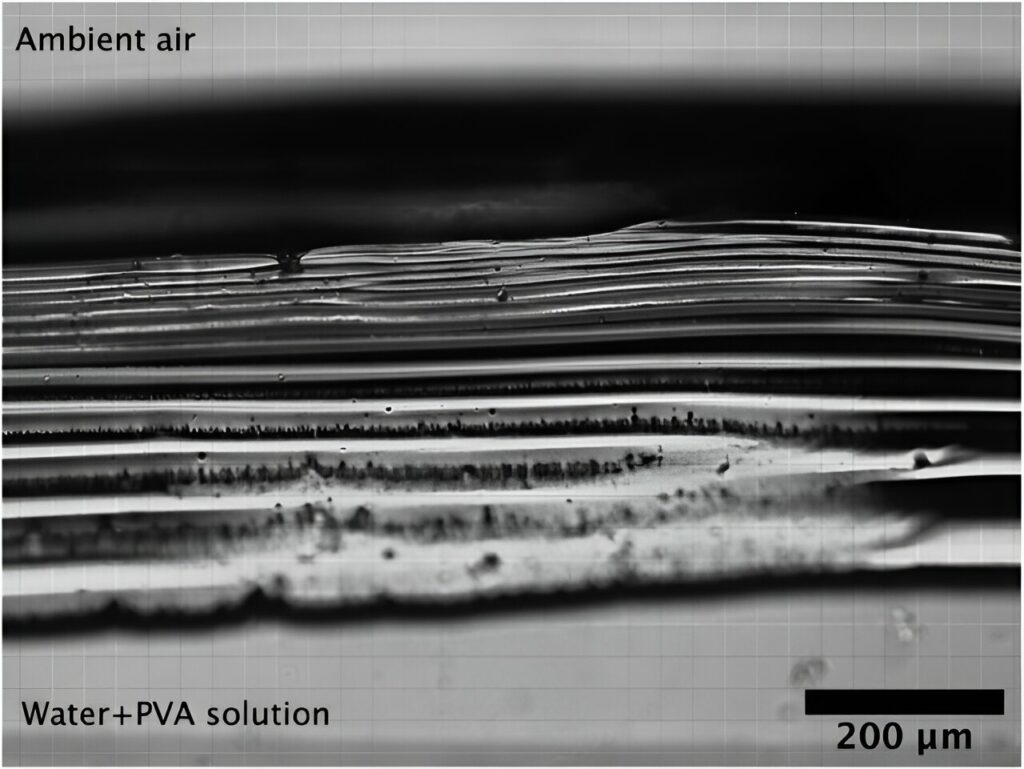“Why Humid Environments Do Not Prolong the Drying Time of Paint”
“Physicists from The University of Edinburgh, in collaboration with an infection and immunity specialist from the university’s Roslin Institute, have experimentally confirmed a theory elucidating the consistent drying rate of paint across different humidity levels. The findings are detailed in a publication in Physical Review Letters.”

Common intuition would lead one to believe that paint on an outdoor fence would dry faster in dry weather than in humid conditions, given that evaporation typically occurs more rapidly in drier air.
However, anecdotal evidence contradicts this assumption for paint and other liquids. Six years ago, chemist Jean-Baptiste Salmon and his colleagues proposed a theory to explain this phenomenon, suggesting that large molecules in the liquid are drawn to the surface during evaporation, creating a ‘polarization layer’ that hinders both evaporation and, consequently, the drying process. In a new study, the research team set out to experimentally validate this theory. To conduct their experiment, the researchers drilled five holes into a short, round cylinder and inserted glass capillary tubes horizontally, sealing them in place.
They then introduced a quantity of polyvinyl alcohol into the cylinder, which was positioned on a scale. A thin layer of oil was poured on top of the liquid to prevent surface evaporation. The researchers placed an air flow box with controlled humidity levels over the cylinder to regulate the experimental conditions. Multiple 17-hour trials were conducted to measure evaporation rates (using the scale to quantify liquid loss) from the tubes at varying humidity levels, ranging from 25% to 90%. As anticipated, the researchers observed constant evaporation rates for approximately three hours.
After this initial period, rates sharply declined, consistent with Salmon’s theory, irrespective of humidity levels. Interestingly, the evaporation rate did not decrease as humidity increased within the first three hours. However, the theory’s validity seemed to be limited to humidity levels up to 80%, as evaporation slowed down at rates higher than that, possibly due to other influencing factors. The researchers posit that their findings could have applications in the medical field, particularly in light of recent research indicating that respiratory droplets exhibit similar skin-forming behavior to that observed in their experimental setup.
This article is republished from PhysORG under a Creative Commons license. Read the original article.
Do not forget to share your opinion with us to provide you with the best posts !




0 Comments